1940: Firestorm Over Oceanside Transfers
Voices were raised, fists shook, and fingers pointed in a conference room at the downtown YMCA on Oct. 24 in a dustup over eligibility involving players who notoriously became known as the “Adopted Football Stars.”
Metropolitan League principals and coaches held a special meeting to consider the status of two “sensational Oceanside athletes,” Jimmy Bender and Bill Brazell.
All league schools except Coronado had representatives at the meeting, chaired by league president Earl Andreen of La Jolla and including vice president Clarence Swenson of Point Loma, CIF representative Martin Perry of Escondido, and secretary Darcie Anderson of Sweetwater.
After much discussion and bluster, the league bosses did nothing, instead launching a high, arcing punt into the lap of CIF Southern Section commissioner Seth Van Patten.
Brazell, described as a “rangy end”, joined the Pirates on Oct. 1 from Kilgore, Texas, and is said to have been taken under guardianship of one C.J. Heltibridle of Oceanside.
Bender, a triple threat back, arrived in Oceanside on Oct. 9, two days before a league game with Escondido.
Bender transferred from Sutton, Nebraska, a community of maybe 1,000 persons in the southeastern corner of the state. He apparently played in several games for the local high school before being “adopted” by a “cousin,” who lived in Oceanside.
On Oct. 11 “Benter”, as his name was first reported, punted, drop-kicked an extra point, ran the ball, and threw a pair of touchdown passes to Brazell in Oceanside’s 13-0 victory over Escondido.
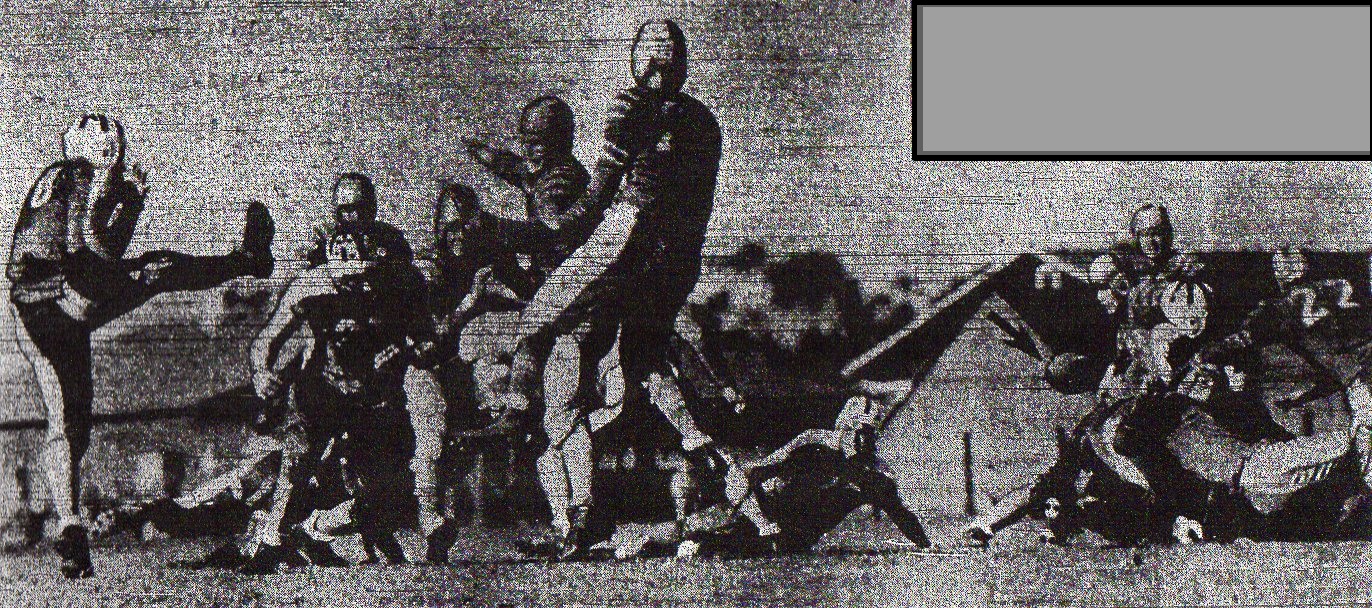
EYEBROWS RAISED
Bender’s debut didn’t go unnoticed by league officials, who, after hearing complaints from coaches, began asking questions.
The players apparently were okay scholastically but would have to address the question of how they got to Oceanside. CIF rules stated that a “boy is ineligible unless there is a legal change of address by the parents or legal guardian.”
While the Metropolitan League waited to hear from Van Patten, the Pirates’ coach, Dick Rutherford, an entrepreneurial sort who also owned a farm in Vista and had experience as a wrestling referee, including professional matches at the San Diego Coliseum, defended his use of the players the following week against Sweetwater.
After a 27-18 loss, in which Bender ran 88 yards for one touchdown and passed for another, Rutherford more or less ignored questions about Brazell and said, not convincingly, that he was “playing Bender in good faith because we believe he is eligible.”
Sweetwater coach Cletis (Biff) Gardner had officially protested Oceanside’s playing of Bender and Brazell before the kickoff.
UNION WRITER FIRED UP
A lengthy game account under no byline in San Diego’s morning newspaper the following day began thusly:
“With a furious display of gridiron power Sweetwater High’s rampaging Red Devils, keyed to a torrid fighting pitch, exploded the Jimmy Bender inflation at Oceanside High by roaring to a 27-18 victory over the Pirates in a hectic game on the Red Devil field.”
A week later, Bender figured in all three touchdowns, scoring two and passing to Brazell for another, in a 19-0 victory over Point Loma on a muddy field.
WAS BENDER “STASHED”?
The superintendent in Sutton, Nebraska, weighed in, expressing “bitterness” over the incident and “deploring” the fact that California schools could help themselves to young, midwestern athletes.
It also was reported that “newspapermen” in Sutton claimed that a Pacific Coast Conference university figured in a deal in which all expenses for Bender’s trip to Oceanside had been paid by an unknown party.
Coast Conference “czar” Edwin Atherton, a college fraternity brother of J. Edgar Hoover and former FBI agent and private investigator, was said to be looking into the charges.
Van Patten ruled against the transfers on Nov. 7, citing the suspicious nature in which the guardianships took place.
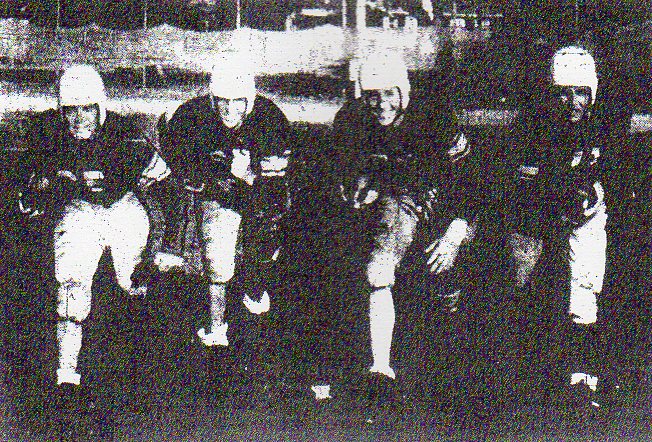
YOU’RE OUT
Messrs. Heltibridle and Bender’s sponsor, Harry Schwarz, had acted with the swiftness of a Nevada divorce.
Heltibridle became Brazell’s guardian on the day the youngster came from Texas and Schwarz filed papers in the San Diego County Courthouse to become Bender’s guardian on the day Bender played against Escondido.
Oceanside forfeited the Escondido and Point Loma victories and the players were done with two games remaining. Bender and Brazell were reported to be “continuing their studies” at Oceanside High.
HOMELESS
St. Augustine played all seven games on the road, as there was no campus facility and it was easier to schedule games if the Saints agreed to be the visiting team. They also continued as an independent with no league affiliation.
The Saints’ league status would be changed, slightly, in this decade. They would be part of a league of small County schools during World War II but their games did not count in the standings.
St. Augustine would join the Southland Catholic League in 1945, but that circuit was made up of schools in and around Los Angeles, which would create travel and financial problems for the small North Park school.
He didn’t know it at the time, but student leader and football player Harry Monahan would play a role the Saints’ finally gaining entry into a league of San Diego schools almost 20 years later.
Monahan attended Notre Dame University and became a sportswriter for the South Bend Tribune. He met Jack Murphy, sports editor of The San Diego Union, at a USC-Notre Dame game in 1953.
Monahan, who maintained his San Diego ties, eventually landed a position on Murphy’s staff. In the succeeding years Monahan worked with Murphy and St. Augustine principal John Aherne, among others, to get the Saints into the San Diego City Prep League. It happened in 1957.
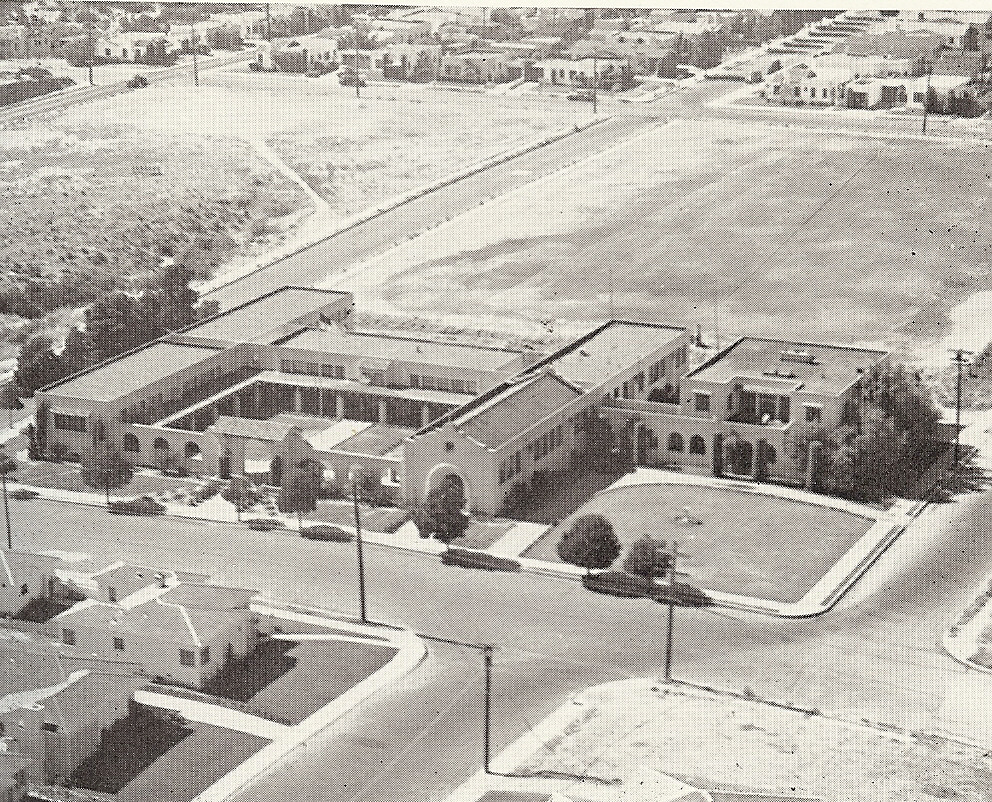
WAR CLOUDS
The Pearl Harbor attack was 14 months away, but future conflict was not far from anyone’s thoughts.
San Diego High’s starting center, Walter Anderson, left school after he was ordered to his national guard unit. Vista fullback Ralph Dominguez and his brother Rudy were called from school to report for Coast Guard patrol duty.
San Diego coach Joe Beerkle used a metaphor when asked about his team, declaring the Hillers’ 1940 outlook was “poorer than the prospect of peace in Europe.”
CAVERS, VIKINGS SEE DOUBLE
Hoover halfback Jim Morgan was the star of the second annual City Schools’ football carnival, running 30 yards for a touchdown against La Jolla and 27 yards for a score against San Diego.
The 4 city schools each played two quarters. The Hoover-Point Loma combine defeated San Diego-La Jolla 26-0.
Hoover topped La Jolla 7-0 and hammered the Cavers, 13-0. Point Loma’s Jim (Speedy) Finsters ran 88 yards in the Pointers’ 6-0 shutout of La Jolla.
A crowd of about 3,500 attended the carnival, which also included performances by various school bands, drum majors, and flag twirlers. The first carnival in 1939 was presented at the end of the season.
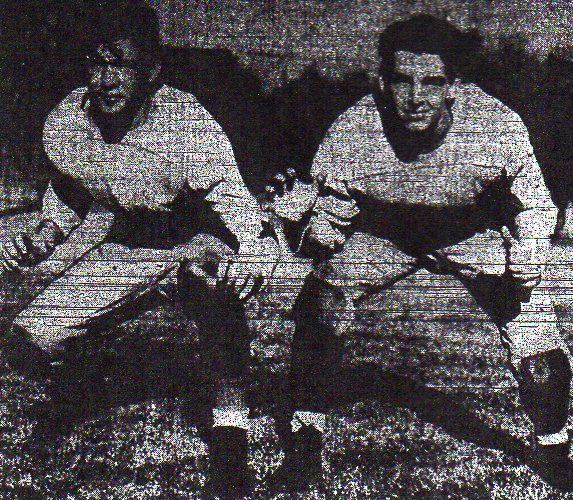
McEUEN LOCKS OUT FANS
Escondido coach Charlie McEuen’s contorted explanation for not allowing Cougars supporters to watch preseason practice: “Fans often get the wrong idea when they see a player in a practice session. These fans sometimes spread false information about a player that gets back to the boy.”
STADIUM IMPROVED
A new, two-level press box in Balboa Stadium was ready in time for football. It replaced “the old, wobbling, dangerous structure” and was built with funds supplied by the San Diego County Council and convention committee of the American Legion.
Lights had been installed in time for the season-ending carnival in 1939, but the first regular game after dark in Balboa Stadium took place this season when San Diego defeated Compton, 20-8.
BIG GAME ACROSS BAY
It wasn’t San Diego-Hoover or San Diego-Long Beach Poly. The game of the year was on quaint Coronado Island, usually accessed by a ferry ride from the foot of Market Street and Pacific Highway.
The undefeated Hemet Bulldogs, coached by former San Diego star Kendall (Bobo) Arnett, took on Hal Niedermeyer’s Coronado Islanders.
The Bulldogs, 4-0, were outscoring opponents 122-6, and led the Riverside League West Division. The Islanders, who had outscored their first four opponents, 110-12, were sparked by quarterback Harry Galpin and fullback Stew (Junior) Worden.
Arnett’s visitors took the game to Niedermeyer’s team, outgaining their green and white-clad hosts, but came up short, 14-0. Coronado never looked back, winning the Metropolitan League championship and posting an 8-0-1 record for the only unbeaten season in school history.
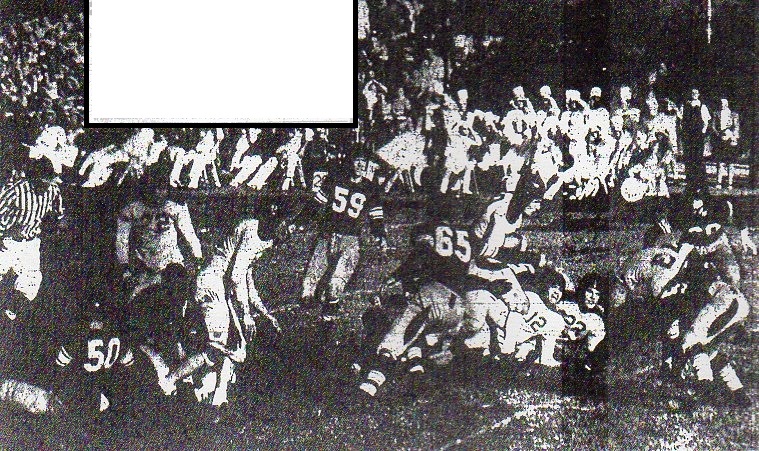
MUSTANGS RUN FREE, TOO
San Dieguito kept pace with Coronado among so-called small schools. The Encinitas entry, which opened in 1936, ruled the Southern Prep League.
John Eubank’s Mustangs, led by Leo Swaim, Max Hernandez, and Red Schmidt, clinched the league title with a 13-0 victory over Vista in Week 7 and defeated St. Augustine 14-0 the next week to finish with an 8-0 record, their only undefeated season before dropping football and being renamed San Dieguito Academy in 1996.
FIVE MAKE ALL-SOUTHERN TEAMS
Tackles Tom Balestreri of San Diego and Dick Attig of Hoover were on the all-Southern California first team. La Jolla tackle Tom Bossert made the second team, and center Chuck Clark of Escondido and Coronado halfback Stew (Junior) Worden were on the third team.
SEASON TO FORGET
San Diego High sustained its second losing season in the last three and only the third since 1914.
Coach Joe Beerkle temporarily lost starting fullback Joe Mathews and other players because of academic ineligibility, benched fullback Jack O’Connor for “insubordination,” and saw his best playmaker go down in the third game.
Mike Luizzi directed an offense that gained 362 yards and 20 first downs and completed 13 of 19 passes for two touchdowns in a 20-13, opening-game victory over the Pasadena Junior College Reserves.
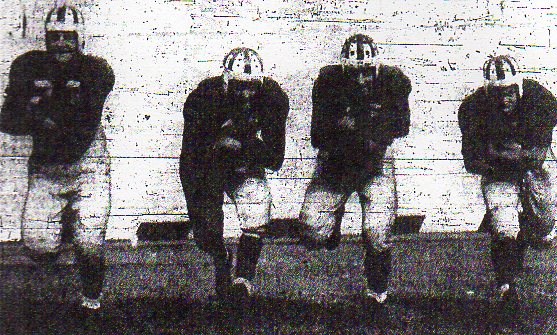
Luizzi, a converted end, passed for two touchdowns the following week in a 20-8 victory over Compton, but disaster would hit the Cavers and Luizzi the following week.
Beerkle’s squad of 36 players boarded a bus at 9:30 on Saturday morning for a six-hour, 220-mile jaunt through dozens of towns and over the winding, precipitous “grapevine”, a steep strip of U.S. 99 that led to the San Joaquin Valley and often caused overheated radiators, burned out brake pads, or vapor lock.
The Bakersfield Drillers, coached by the legendary Dwight (Goldie) Griffith, had not lost since 1938, a run of 17 games, and they struck the Cavers with a power running game that featured misdirection plays and against-the-grain cut backs. San Diego was on its heels all evening.
The 35-13 loss was bad enough but the Cavers also lost Luizzi for the rest of the season with a fractured left arm on the last play of the game.
With Luizzi out, the Cavers enjoyed running the ball in a 37-18 rout of Glendale, led by first-year coach Ambrose (Amby) Schindler, star of the 1933 and 1934 Hilltoppers teams. Joe Mathews scored 4 touchdowns for San Diego.
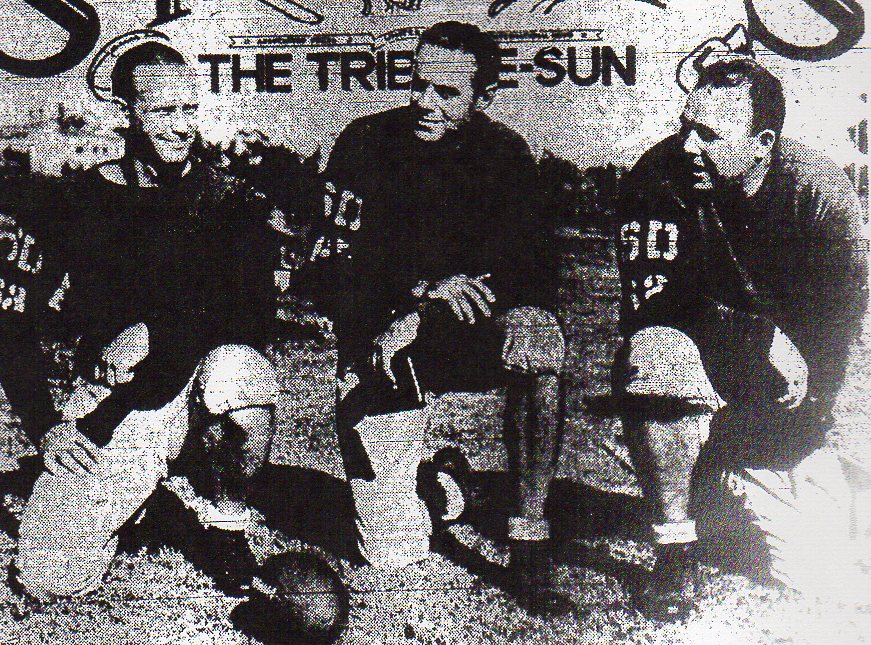
RAINY DAYS AND FRIDAYS
Hoover and San Diego called off games because of fields drenched by recent rain.
The Cavers’ game with Los Angeles Cathedral would not be rescheduled. Hoover’s Coast League contest with Long Beach Poly was played a month later, the Jackrabbits improving to 7-0 before 3,500 at Hoover and clinching the Coast League title, 14-10.
“We didn’t have water wings handy and I couldn’t risk the chance of someone drowning,” explained La Jolla coach Marvin Clark, who postponed the Vikings’ game with Escondido. Most other County schools got their games in.
NO REST FOR CARDINALS
Hoover played the 1939 Southern California football champion and runner-up on successive weeks.
Cardinals coach Pete Walker took a traveling squad of 28 players to the Santa Fe Railway Depot for a 7:45 a.m. trip to Santa Barbara, where the Cardinals dropped a 15-12 decision the next afternoon to the playoffs’ second-place finisher of the year before.
The next week, at home, Hoover whipped 1939 champion Alhambra, 19-0, as Hub Foote raced 58 yards for one touchdown and Charlie Blackburn 83 yards for another.
Santa Barbara won the Southern California championship, defeating Whittier, 26-0.
SIGNS OF THE TIME
San Diego police chief Cliff Peterson was appointed by the Peace Officers’ Association of California to take part in a proposal to eliminate speed limits on state highways during daylight hours, with a limit of 40 miles an hour in night driving.
Chula Vista purchased land to build a $175,000 airport. Fred Rohr, who provided fuel tanks constructed in San Diego for Charles Lindbergh’s “Spirit of St. Louis” on its trans-Atlantic flight in 1927, founded Rohr Aircraft Company in Chula Vista in August.
The 10-round, boxing main event at the Coliseum featured Los Angeles’s “Blimp” Williams against the San Diego favorite, light-heavyweight Sailor Jack Coggins, who deflated the Blimp in the third round.
The largest sporting-event crowd in San Diego history took place on Labor Day, when 26,500 were on hand for the Del Mar Handicap at Del Mar Racetrack
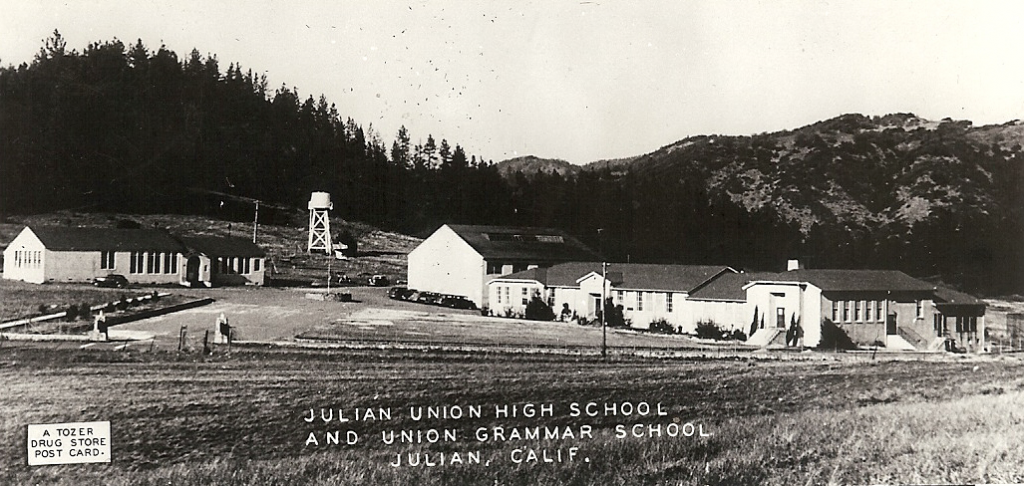
TRUE GRID
UT-San Diego columnist Nick Canepa, a 1964 San Diego High graduate, was nephew of the late San Diego High star Mike Luizzi…Sweetwater’s Marcus Alonzo, a Metropolitan League sprint champ in the spring, closed his football career with 5 touchdowns in a 33-14 win over Escondido…Alonzo ran away with the league scoring title with 54 points…5,000 persons were on hand at Hoover as Sweetwater outgained Hoover 229-84 on the ground, 52-29 through the air, and recovered 8 Hoover fumbles but got out only with a 0-0 tie after the Cardinals’ Jim Morgan was wide on a 33-yard field goal attempt with a minute to play…Hoover end George Brown went on to become an all-America at the Naval Academy and played at San Diego State after World War II…Brown was team doctor for Don Coryell’s Aztecs in the 1960s and his son George was one of the leading shot putters in the nation at Granite Hills High and was a fullback on Coryell’s 11-0, 1969 team…15,000 persons in Balboa Stadium witnessed Hoover, trailing, 12-7, entering the final quarter, “get off the floor”, in Union writer’s Christy Gregg’s words, to beat the Hillers 21-12…weirdness included game officials turning on the lights when darkness descended, then turning them off after a meeting with coaches Beerkle and Walker at midfield… San Diego outgained the Cardinals, 216-109… Hoover’s Herbert (Hub) Foote starred at San Diego State after World War II and went on to a long coaching career in the area… Mike Foote, the coach’s son, was a standout at Mount Miguel High and Oregon State and played three seasons in the NFL with the Los Angeles Rams and Washington Redskins… what’s in a name?: Fallbrook’s fullback was Leroy (Speed) Lash… a Sweetwater lineman was “Waffles” Escalante… San Diego originally announced a midseason, nonleague game with the Riverside Sherman Institute but the game never was played… sluggish and blundering, the Hillers dropped their final game to Inglewood, 13-12, before 2,500 “refrigerated” fans in the stadium…a short-term member of the CIF Southern Section was the Instituto Tecnio Indusrial, also known as Tijuana Tech in the Baja California city….